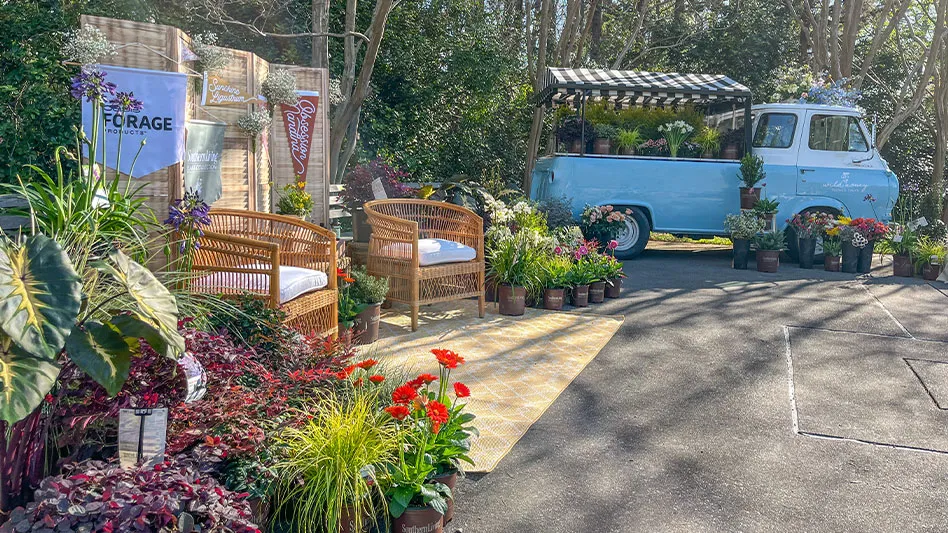
Just when you thought your IGC had Millennial marketing down pat, experts on marketing to the Millennial generation are saying, “Not so fast.” This generation, whose brand loyalty and spending dollars are so in demand, no longer fit many generational assumptions — and it turns out some of those notions were inaccurate from the start. Millennials, roughly 20 to 36 years old this year, have matured. Your Millennial marketing may need to grow up, too.
Stereotypes that need to go

Four years ago, Millennial marketing expert Jeff Fromm was already reporting that maturing Millennials, also known as Generation Y, no longer fit the unattached, live-with-Mom-and-Dad stereotype. As a partner at ad agency Barkley and co-author of “Millennials with Kids,” Fromm reported in 2013 that the age group already accounted for 80 percent of all U.S. births. Today Fromm is even more adamant.
“It’s time to adjust. Millennials are not broke, unemployed and living in their parents’ basements,” he says.
Dr. Charlie Hall, Ellison Chair in International Floriculture at Texas A&M University, believes statistics on basement-living Millennials have been inflated all along. He made a surprising discovery while digging into government spreadsheets. A footnote deep inside the data explained that children living in dormitories were included in living-at-home numbers.
“Many people are misinformed about how many Millennials live at home. Just think of the numbers living in dorms,” Hall says. In actuality, the percentage of Millennials living at home is only slightly higher than the two previous generations, Gen Xers and Baby Boomers, at the same age.

Katie Dubow, creative director of Garden Media Group, believes many other stereotypes need to go, too. “Entitled” Millennials are better understood as having high levels of self-esteem, and the idea of an impatient, “job-hopping” generation is unearned. Dubow points to a 2010 Pew Research Center study that found college-educated Millennials stick with employers longer than the previous generation at the same age.
And that “lazy slacker” image? Dubow says, “Think again. The way young adults work is simply different.” Unlike previous generations, Millennials prefer collaborating in teams, use breaks to aid productivity, and expect work to flow into evenings and weekends.
Parenthood and household shifts
Having children is one of the defining life events occurring for maturing Millennials, just as it’s been for every generation that’s gone before. But Millennial parenthood comes with different family dynamics than past generations.

“One in five stay-at-home parents is a dad, and that number is increasing dramatically,” Fromm says. He also reports a shift from the authoritative family dynamic of the past to a collaborative, family decision-making process, where kids have a voice as they get older.
Just the idea of Millennial parents contradicts stereotypes, but Dubow notes it’s important to understand how different the 10.8 million U.S. Millennial households with children really are.
“More than a million Millennials become moms each year, and there are more single-mother households that are Millennials than other generations,” Dubow says. She also notes that Millennials are much more likely to cohabit with their significant others. “Since 2011, Millennials have headed more households made up of unmarried partners than any other adult generation,” she explains.
Another key shift is where maturing Millennials are choosing to live. In contrast to past preferences for amenity-rich urbanized areas, Hall and Fromm say that Millennials forming households and having kids have set their sights on the suburbs.
Even though $1.3 trillion in student debt has delayed the process, Hall reports the cohort is buying. He quotes a recent Zillow report that shows more than half of U.S. homebuyers are less than 36 years old.
“There’s a new generation in town that’s shaping the future of real estate,” he says. “And when Millennials start showing interest in housing, that’s when their interest in lawn and garden products also increases.”

Diversity that demands attention
Despite the commonalities credited to this generation, Millennials are extremely diverse. Hall cautions against underestimating the impact of age, life experiences and life stages. “Individual tastes and preferences always trump cohort characteristics or stereotypes,” he says. Many of these preferences are influenced heavily by racial and ethnic backgrounds.
“One thing I think is not really on the radar of many garden center operators is that this cohort is more diverse than we’ve seen in any cohort before. Nine to 10 percent of homes sold now are to Hispanic Americans,” Hall says. Understanding the diversity of your local population is critical. “Salsa is the No. 1 condiment versus ketchup now. What’s our salsa in terms of plant material mixes we offer? That’s an interesting question to consider,” Hall says.
Dubow echoes the sentiment that it’s time to stop marketing to the same demographics and embrace diversity — in many forms.
“By 2020, 50 percent of U.S. children will be non-white,” she says. “While uncomfortable to admit, our industry is fairly white and we show those family models in our marketing. To truly attract Millennials, it’s important to remember that there are other demographics out there that garden.” Dubow stresses that this transcends race. “Consider these types of families: single-parents, multi-racial, multi-generational, stay-at-home dads.”

Repackaged projects and activities
A gardener himself, Fromm expects a surge in gardening fueled by Millennials starting families. For some parents, it will be a way to get away from it all. For others, gardening will be an activity for families to share in. But either way, they’ll want it to be fast, efficient and easy. “Millennials are changing brands because parenthood is causing them to change their lives. Parenthood brings responsibility and less time,” he says. “They’re looking for brands to simplify their lives. Retailers have to make it that way for them, or they won’t respond.”
Hall advises bundling your portfolio of products and services in bite-size, project-size increments. “There’s only a certain amount of time Millennials have to do their landscaping and interiorscaping. We’ve got to bundle our products in these 10- to 12-hour increments or 3- to 4-hour increments or 1- to 2-hour projects. Do that packaging for them, so they get everything for their project, from the pine bark to the plants,” Hall says. “We’re being very remiss in not doing it.”

New in-store direction
One stereotype that sticks is the Millennial generation’s inseparable union with technology. So, the question arises: Will they show up in-store? Dubow shares some encouraging statistics.
“According to behavioral marketing firm SmarterHQ, a whopping 50 percent of Millennials not only go to physical stores, they prefer going to them as a primary means of shopping,” she says. Even so, Dubow advises IGCs to not rely on in-store sales and invest in mobile-friendly e-commerce.
“41 percent of Millennials make purchases with their smartphone — and that number will continue to grow,” she says. “Be sure your website provides the best mobile experience possible, meaning everything done on your website should still be mobile.”

Fromm predicts that mobile shopping and in-store buying will go hand-in-hand. “I think we’ll see a big uptick in ‘shop online, buy in-store’ in the gardening space. The store is where I get final proof and pick up, but online is where I learn,” he says. “Millennials are going to look for brands that provide incredible expertise both in their store and online — and make it easy. It’s pretty important how you deliver a seamless experience to a mobile-first buyer.”
As the Millennial generation grows up — becoming parents, forming households and buying homes – the opportunities to meet their maturing needs abound. Hall thinks the industry has five to seven years before the bulk of Millennials hit these milestones and the full impact is felt.
“In the meantime, we can’t forget about the Boomers — they put us on the map. But we need to be prepared to lose that particular market segment as they continue aging,” he says. Tweaking your Millennial marketing to “grow up” alongside the Millennial generation will be essential to continued success.

Explore the November 2017 Issue
Check out more from this issue and find you next story to read.
Latest from Garden Center
- Content Marketing Through Storytelling: Sharing Your Horticulture Brand’s Journey
- Proven Winners introduces more than 100 new varieties for 2025
- Weekend Reading 5/10/24
- The Family Business, Part 2: Agreeing (and disagreeing) on capital investments
- Registration opens for Darwin Perennials Day
- Weekend Reading 5/3/24
- Weekend Reading 4/26/24
- Smith Gardens assumes operations of Skagit Horticulture





